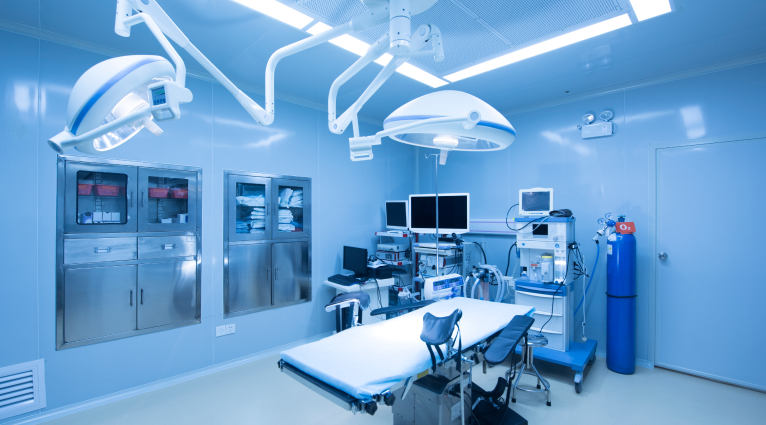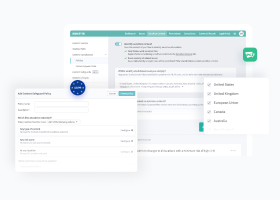21 CFR Part 820
21 CFR Part 820 is part of the United States Federal Drug Administration (FDA) current good manufacturing practice (CGMP) guidelines, which include requirements for developing medical devices. It governs the methods, facilities, and controls used for medical device design, manufacturing, packaging, labeling, storage, installation, and service. 21 CFR Part 820 ensures that all medical devices developed, manufactured, and sold within the US market are safe and follow acceptable quality processes at all stages of development.

History
The 1950s and 1960s gave rise to increasingly complex medical devices that were outside the scope of FDA regulations. In 1976, thousands of women were injured by the Dalkon Shield intrauterine device. In response, the Medical Device Amendments (MDA) created a mechanism to require premarket approval of medical devices.
In 1978, the FDA’s Good Manufacturing Practices (GMP) were established and included requirements for medical devices. GMP was codified under 21 CFR Part 820 in 1990.
Scope
21 CFR Part 820 is applicable to any finished medical device manufactured in the US or imported into and intended for use in the United States. The requirements of 21 CFR Part 820 govern the methods, facilities, and controls used for the design, manufacture, packaging, labeling, storage, installation, and servicing of all finished devices (i.e. medical devices) intended for human use.
15 Subparts of 21 Part CFR 820
- These focus on a particular area of medical device manufacturing. Most are applicable to specific device types—all class II or III devices and many class I devices—to ensure that finished devices will be safe and effective.
1. Subpart A, General Provisions
Provides definitions related to the implementation of 21 CFR 820 and includes specifics about who must comply with it, including:
- Applies to all manufacturers of finished medical devices
- Defines finished devices as any device or accessory to any device that is suitable for use or capable of functioning, whether or not it is packaged, labeled, or sterilized
2. Subpart B, Quality System Requirements
The quality systems for FDA-regulated products (i.e., food, drugs, biologics, devices) are known as current good manufacturing practices (CGMP). The requirements for a quality system include:
- Details of quality representative
- Management representative, reporting, and review provisions
- Organization structure
- Procedures for quality audits
- Quality planning details, policy, and system procedures
- Requirements for personnel (i.e., workers to have appropriate education, training, and experience)
3. Subpart C, Design Controls
Design controls must be in place for each section of the design process. These control the whole design and development process and include:
- Planning
- Input
- Output
- Review
- Verification
- Validation
- Transfer
- Changes
- Documentation—Design History File (DHF), Device Master Record (DMR), Quality System Record (QSR), and complaint files
4. Subpart D, Document Controls
Document controls detail requirements for approval, distribution, and changes. This recording should include the date a document was approved and the approver’s signature. An overview of all important documents should be maintained, and obsolete documents should be removed.
These processes apply to changes in documents as well. All document controls, and updates, should be recorded and shared with the appropriate personnel in a timely fashion.
5. Subpart E, Purchasing Controls
Management (i.e., selection, evaluation, and qualification) of third-party partners (e.g., suppliers, contractors, consultants) must be based on their ability to meet specified requirements and quality standards. In addition to processes for managing third parties, records must be kept, including purchase data.
6. Subpart F, Identification and Traceability
Finished device manufacturers must implement procedures for identifying a product during all receipt, production, distribution, and installation stages. Any finished device must clearly show who made it as well as its make and model.
7. Subpart G, Production and Process Controls
Subpart G helps ensure that devices conform to specifications by developing, implementing, controlling, and monitoring production processes—including any changes.
Key considerations include:
- Controlling of environmental conditions that could negatively impact product quality
- Documenting instructions and standard operating procedures (SOPs)
- Ensuring compliance with all standards and regulations
- Meeting requirements for personnel’s health, cleanliness, personal practices, and clothing
- Having adequate monitoring and inspection activities throughout the production process
- Validating and ensuring the safety of all equipment and processes
In addition, processes need to be established and maintained to control:
- Adjustment
- Automated processes
- Buildings
- Device packaging and shipping containers
- Equipment
- Inspection, measuring, and test equipment
- Label integrity, inspection, operations, and storage
- Manufacturing material
8. Subpart H, Acceptance Activities
All activities related to in-process and finished devices (e.g., conduct testing, inspections, verification activities) must be documented and compiled as part of the Device History Record. This should include all activities that identify a product’s acceptance status with conformance or non-conformance to acceptance criteria.
9. Subpart I, Non-Conforming Product
Procedures must be developed and maintained to handle products that do not conform to specified requirements, including why the product is non-conforming.
10. Subpart J, Corrective and Preventive Action
Corrective and preventive action procedures for risks and errors should be created for all areas, including processes, audits, records, and dealing with complaints and returns. The procedures must include the requirements as well as documentation.
11. Subpart K, Labelling and Packaging Control
These controls specify how to affix labels so healthcare professionals can identify the information they need. Procedures need to be in place for producing and inspecting labels for correct information and placement.
Label information must be printed and applied such that it remains affixed during the customary conditions. In addition, packaging and shipping containers must protect the devices from alteration or damage.
12. Subpart L, Handling, Storage, Distribution, and Installation
To prevent adverse effects, devices should be handled and stored in a way that protects them from damage. In addition, only devices approved for release may be distributed. Adequate installation and inspection instructions must also be provided.
13. Subpart M, Records
Records must be legibly written and safely stored to prevent data loss and ensure accessibility for review and copying by the FDA. Records should be retained for no fewer than two years from the date of release, except for management reviews, quality audits, and supplier audit reports.
Specific records that need to be kept and made available for FDA inspection include:
- Device Master Record—device and production specifications; quality assurance procedures; labeling and packaging details; and installation, maintenance, and servicing instructions
- Device History Record—key dates, quantities manufactured and distributed, and identification codes
- Quality System Record—the location of where procedures and activities are stored
- Complaint files—all details related to a complaint, including the investigation and outcome
14. Subpart N, Servicing
If servicing is a requirement for the medical device, there should be details about:
- When servicing took place
- Who carried it out
- What was done
- Any relevant statistical methodology used for analysis
15. Subpart O, Statistical Techniques
As required, procedures for identifying valid statistical techniques should be implemented to establish, control, and verify process capability and product characteristics.
Who Must Comply with 21 CFR Part 820?
21 CFR Part 820 is a requirement for any finished device intended for human use manufactured, imported, or offered for import in any State or Territory of the United States, the District of Columbia, or the Commonwealth of Puerto Rico.
Finished devices are medical devices used to diagnose, prevent, or treat a medical disease or condition without any chemical action on any part of the body. There are three classes of medical devices:
- 1. Class I—low-risk devices (e.g., bandages, handheld surgical instruments, nonelectric wheelchairs)
- 2. Class II—intermediate-risk devices (e.g., CT, scanners, infusion pumps, electric wheelchairs)
- 3. Class III—high-risk devices that are very important to health or sustaining life (e.g., pacemakers, breast implants)
21 CFR Part 820 is applicable to all class II and III devices as well as these class I devices:
- Devices automated with computer software
- Protective restraints
- Source, radionuclide teletherapy
- Surgeon’s gloves
- System, radionuclide applicator, manual
- Tracheobronchial suction catheters
21 CFR Part 820: A Regulation that is Good for Business
While comprehensive in its scope and detailed in its subparts, 21 CFR Part 820 does not specify how a medical device must be produced. 21 CFR Part 820 provides a framework to guide medical device manufacturers in the development and production of safe products.
The requirements set forth in 21 CFR Part 820 have the added benefit of embedding good manufacturing practices which ensure safety and optimize operations to prevent costly product failures.
Egnyte has experts ready to answer your questions. For more than a decade, Egnyte has helped more than 16,000 customers with millions of customers worldwide.
Last Updated: 28th November, 2021




